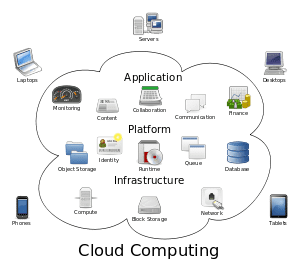
As cloud computing begins to dominate the development landscape, more and more companies and websites are turning to SAAS in order to fulfill their business needs. SAAS, or software as a service, is a distributed software management system that sees programs installed on mainframes in “the cloud.”
These programs, such as data entry or sales software for everything from small businesses to multi-national corporations, offer many advantages over traditional, locally installed applications. While on-demand software has been available in many forms since the inception of computer networks, it has only recently gained prominence in all modes of computing.
Software as a service can be traced decades back to when IBM dominated the computer market for businesses. Distributed data and programs hosted on mainframes were common, as dumb terminals provided access to end users through locally hosted clients. But near the turn of the millennium, the model’s slow growth accelerated greatly as broadband internet became more widely available and web browsers evolved to be able to handle more advanced scripts and web apps.
In fact, one of the biggest differences between the older SAAS infrastructure and today’s common setup is the ability to access cloud programs through any common internet browser rather than possibly processor-intensive local proprietary programs.
Throughout the rise of the modern personal computing era, the software was available for purchase in stores or online for an up-front cost. Users would install these applications from a floppy disk or compact disc, and they’d receive or purchase upgrades and patches only if the developer chose to continue to support the product. But with the software as a service model, customers often are required to purchase a subscription to the software vendor rather than paying a potentially hefty fee for an indefinite license to use it. While this may sound as if it could add up to be more expensive in the long run, the value in taking away upgrade and maintenance headaches is more than with it to many businesses and end users.
Whether a website and distributed software solution that assists with sales management (such as salesforce.com) or more simple web apps for personal use and entertainment, SAAS is revolutionizing the way that programs are accessed. While a local application may run into compatibility issues across a wide range of machines, on-demand software has far less problems in this regard.
Since web browsers and apps that access these programs are globally standardized, they’re much less likely to encounter hardware conflicts. Simple project management software becomes more popular with each passing day.
Additionally, local programs are not necessarily always on standby for use. Since they are chained down to whatever local computer happens to have the installation on it, they are often not as accessible to a highly mobile sales or marketing team. Software as a service instead allows data to be checked and updated on-the-fly, whether from a tablet, notebook, smartphone, or desktop PC.
Enterprise data programs such as the ones deployed and distributed by salesforce.com enable sales teams to move to the forefront of their markets without worrying about compatibility or other traditional software woes.
Whatever the next big movement and innovation in technology will be, we can be sure that SAAS will not be going anywhere soon. The model is proven to take full advantage of our ever-changing technology and networking capabilities in ways the old distribution systems never could. While both software as a service as well as up-front program purchases has their advantages, software companies are leaning more and more toward the cloud as the gold standard in computing for enterprise and personal use alike.
Workzone provides easy-to-use, powerful cloud-based project management software.
Related articles








